Massimo Marino's Blog: The Ramblings and the Rumblings, page 4
August 25, 2016
The Best Inns in Tulsa, Grand Rapids, Columbus and more
The post below was originally published on X Days in Y on May 26 by Avichai.
Are you riding across America’s Heartland on an epic coast-to-coast road trip? Traveling on business? Visiting some family or friends? Whatever the reason might be that brings you to the Midwest, there’s one thing for certain: you’ll need a place to spend the night. Here are some of the best inns in five Midwestern cities that will surprise you.
Duluth
 Image via Flickr by tvdxer
Image via Flickr by tvdxer
As Minnesota’s second largest metropolitan area, Duluth sits on the beautiful shores of Lake Superior. As far as hotels in Duluth go, the Holiday Inn & Suites is a top choice. With views of the Great Lake from your hotel window, you’re right in the heart of downtown Duluth. Go for a dip in the eighth-floor heated pool or visit the city’s famous Canal Park, which is just minutes away.
Columbus

Image via Wikimedia by Tysto
Making BusinessWeek’s list of America’s 50 best cities in 2012, Columbus, Ohio, is a fun place to visit. It’s home to the Buckeyes of Ohio State, but if you want to get away from the frat scene of the university area, stay at the Drury Inn & Suites by the convention center in downtown. This hotel is a favorite among business travelers, though couples and families will love this place, too, thanks to its romantic packages and awesome breakfasts.
Grand Rapids

Image via Wikimedia by Grguy2011
Nicknamed the Furniture City, Grand Rapids is also the second largest city in Michigan. If you don’t mind staying a bit outside the downtown area, the Residence Inn Grand Rapids West is a little different from your usual inn. All rooms are decorated in classic iconic fashion, and you can even bring your pet along. There’s a swimming pool and a free buffet breakfast, which are perfect ways to start your morning before hitting the road.
Tulsa

Image via Wikimedia
Now we head to the true middle of the United States. Hotels in Tulsa Oklahoma offer that warm southern hospitality. A classic choice for business travelers, the Hilton Garden Inn Tulsa Midtown, might be a little tricky to find, but the sleep quality is top-notch. Compared to other hotels in Tulsa, the Hilton Garden Inn offers great value for your money thanks to all the comfortable amenities that come at a very reasonable price. If you’re not visiting Tulsa for business, you’ll be happy to know the hotel is close to all the top attractions like the aquarium, the Big Splash Water Park, and the Air and Space Museum.
Troy

Image via Wikimedia by cadiomals
Our final Midwest destination takes us back north to Troy, Michigan. Located about a 30-minute drive from Detroit, Troy has become somewhat of an affluent alternative to the Motor City. The Hampton Inn & Suites is a great choice for both families and business travelers. The hotel is minutes away from the famous Somerset Collection luxury mall and plenty of restaurants to satisfy your palate. All rooms are furnished with microwave ovens and mini fridges, and those who like to stay active while traveling will love the indoor swimming pool. There are plenty of other Troy hotels to choose from, as well.
So there you have it. Who said that inns must be dull and boring places to stay? If you’re visiting some of these great cities in the Midwest, keep one of the hotels I’ve just highlighted in mind. They are pampering and comfortable, and they offer great value for your money, whether you’re traveling on business or vacation.
This article is part of the Hipmunk Hotels Winter 2016
The post The Best Inns in Tulsa, Grand Rapids, Columbus and more appeared first on § A Scientist Envisioning Science Fiction.
August 8, 2016
Elements of Style
Narrative is a different kind of prose. It’s not journalism, and it has to render rather than report. O Tempora, o Mores, what is accepted today as good narrative prose is different from books and novels of the past. Flowery prose, pedantic descriptions, passive voices that were part of the accepted narrative styles of even half a century ago, are today seen as the mark of the debutant.
One of the things I learned—and that resonates as a mantra—is to ‘cull all unnecessary words.’ If you want to have a good start with style, read and digest The Elements of Style, Fourth Edition
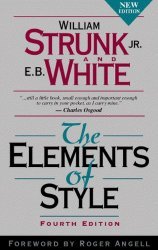

With “The Elements” in mind, what an independent author could do in order to make the life of editors and proofreaders better so that readers end up with a something that gives pleasure rather than headaches? Here’s a compendium of rule-of-thumbs that you might want to consider and apply.
ABBREVIATIONS & CAPITALIZATION
• Unless it is widely known to your readers (USA, UK, EU, UN) spell out the phrase or entity the first time you use it, with abbreviation in parentheses: The World Health Organization (WHO) was was established on 7 April 1948, headquartered in Geneva, Switzerland.
• There is no need for periods in abbreviations like those mentioned above.
• Avoid littering your text with acronyms and abbreviations. Note: Acronyms differ from abbreviations in that they read as a single words and often evoke meaning through spelling: Driving under the influence (DUI), Driving While Intoxicated (DWI) OR Auto-Immune Deficiency Syndrome (AIDS).
• Best not to capitalize whole words for emphasis (except when creating a style sheet). It reads like a SCREAM!
• Use capital letters to begin sentences, proper names, cities, nations, and the like.
• Titles & Rank– Avoid capitalization unless referring to a specific person: President Barack Obama landed in Havana. BUT The U.S. will soon have a new president.
ITALICS
Italicize foreign words not commonly understood: I love croissants. BUT For Mary, it was a nuit blanche.
Use italics sparingly for emphasis as good writing usually makes it clear where the emphasis falls: I could not not be there for the wedding.
Use italics for titles (plays, books, and major compositions): Handel’s Messiah OR Pamuk is the author of Snow.
DO NOT italicize proper nouns. Harvard University NOT Harvard University.
DO italicize abbreviations that would be italicized if spelled out: He likes the Journal of the American Medical Association (JAMA).
NUMBERS, DATES, TIME
• Spell out whole numbers from zero through one hundred and rounded-off multiples of these. Ex: thirty-two, one hundred nine thousand, fifty-four thousand, three hundred thousand.)
• If many numbers appear within the same paragraph or short text, use numerals, even if they should be spelled out according to the rule above.
• Use month-day-year dates: June 30, 1914 NOT 30 June 1914. Note that in text, a comma follows the year: When he was born on June 30, 1914, the world was on the brink of war.
• Spell our time of day in even, half, and quarter hours: We will resume at ten thirty. – Spell out numbers when “o’clock” is used: Her day begins at five o’clock in the morning.
• Use numerals & colons with exact times, using lowercase a.m. (ante meridiem) and p.m. (post meridiem) with periods: Her train leaves at 5:22 a.m. and mine at 7:00 p.m..
PUNCTUATION IN GENERAL
• Commas
A comma BEFORE “and” in a series (called the “serial comma”) helps to avoid ambiguity: He took a picture of Mary, John, and Susan. Use also if the last element includes “and”: They ate cheese, mustard, and bread and butter.
• Quotation Marks
Use double quotations for speech within text and place commas, periods, question marks, and exclamation points inside quotation marks: “I love you!” he shouted, OR Her eyes were “indigo,” as blue as the sea.
Double quotes may be used (sparingly please) to imply a satirical or atypical use of a word: After working in a dockside bar that summer, she considered herself “experienced” with the U.S. Navy.
Use double quotes for songs, poems, stories, paintings, and other short compositions: We all sang “God Save the Queen.” OR Mary Oliver’s best poem is “Wild Geese.”
Use single quotation marks for quoted material within quotations: “Why do you always say ‘ladies first’ before you open the door for me?” OR John said, “I love that poem ‘Wild Geese.’”
If your sentence ends with a quote, however, the final punctuation mark may fall outside the quotation marks, depending on usage: Why should we tolerate insults like “dumb blond”? OR I love that poem, “Wild Geese”!
• Colon vs Semi-colon
A colon says “note what follows.” Use with lists, to set a word/phrase apart, or to focus attention: His heart sank when he saw the sign: “Building Condemned.” – A semi-colon is like a joint (think of your knee or elbow) allowing separate-but-related elements to act as one: She had always wanted a water view; the river so near made it feel perfect.
• Hyphen, em-dash, and en-dash
Each serves a function:
Hyphens typically separate elements in adjectives where prefixes come into play: anti-abortion, pro-democracy, un-American.
When a comma does not create enough “breath” between clauses, the long em-dash helps by setting a related thought apart or giving it emphasis: She traveled to Australia—despite the cost—because it was her only chance to see her family.
The shorter “en-dash” connects dates and numbers: William Shakespeare (1564 –1616) OR “23–29”. (NOT 1564-1616 or “23-29”). Place lifespan dates in parentheses.
Hyphenate compound words when used as an adjective: James Baldwin was an African-American writer. But not when used as a noun: My friend is an African American. Another example: She loves eighteenth-century art while he finds the entire eighteenth century fascinating. Please note: We are living in the twenty-first century.
Hyphenate number compounds: She turns twenty-one today,OR The ninety-nine-year-old man won the race.
One word or hyphenate? When in doubt, use one word: multicultural NOT multi-cultural; email NOT e-mail.
• Suspension points
Use when a thought is unspoken/unfinished: “You know how I feel…”
PUNCTUATION IN DIALOGUE
If you choose to omit punctuation altogether or to indicate speech with am em-dash, please do this consistently. If you choose to use punctuation, you may follow these commonplace rules:
• Place spoken words within double quotes and with punctuation inside quotes: “Why now?” he asked.
• Use commas inside quotation marks to link speech interspersed with narration: “I really wish you’d stay longer,” she said, “because I’m not sure I can handle the pressure alone.”
• If you lead into spoken words with “that” then there should be NO COMMA BEFORE quotation marks: He finally told his brother that “You are no longer welcome in this house.”
• If your characters are well-drawn, there will be limited use for “he said,” “she replied,” and other such identifiers.
• If you choose to write in dialect, be consistent so that readers can “hear” the voice you aim to create.
Massimo Marino is a scientist envisioning science fiction. He spent years at CERN and The Lawrence Berkeley Lab followed by lead positions with Apple, Inc. and the World Economic Forum.
Massimo currently lives in France and crosses the border with Switzerland multiple times daily, although he is no smuggler.
As a scientist writing science fiction, he went from smashing particles at accelerators at SLAC and CERN to smashing words on a computer screen.
He’s the author of multi-awarded Daimones Trilogy, with over 1,000 ratings in combined Amazon and goodreads. His novels have received the Seal of Excellency from both AwesomeIndies.net and IndiePENdents.org
The Daimones Trilogy:
“Daimones” “Once Humans” “The Rise of the Phoenix”
• 2012 PRG Reviewer’s Choice Award Winner in Science Fiction
• 2013 Hall of Fame – Best in Science Fiction, Quality Reads UK Book Club
• 2013 PRG Reviewer’s Choice Award Winner in Science Fiction Series
• 2014 Finalist – Science Fiction – Indie Excellence Awards L.A.
• 2014 Award Winner – Science Fiction Honorable Mention – Readers’ Favorite Annual Awards
His novels are available from Amazon, Barnes & Noble (Nook), iTunes Apple Store, and many other retailers around the world.
Join his mailing list for new releases, or follow him on Facebook, Google+, and Twitter.
The post Elements of Style appeared first on § A Scientist Envisioning Science Fiction.
August 5, 2016
The Insider’s Guide to Conquering Comic Con
This article was originally published on Hipmunk’s Tailwind Blog on April 13th 2016 by THEHIPMUNK.
Another year, another multitude of Comic Cons to attend. Whether you’re hitting up the mother of all Cons in San Diego, cosplaying in NYC, or attending a smaller Comic Con in Grand Rapids or Amarillo, the following strategies will help ensure that you have a truly delightful time.

Buy tickets early.
Whenever possible, buy tickets online before the event. You’ll save money and avoid the heartbreak of arriving at Comic Con only to find out that the special event you needed to see has already sold out.
Make a plan in advance.
There is so much to see at Comic Con, and it’s physically impossible to see it all. For this reason, it’s important to study the schedule and venue maps in advance so that you can plan out each day around your must-see events. If you want to see one of the major presentations (say, Game of Thrones in San Diego’s Hall H), keep in mind that you’ll need to budget in hours (and hours) of time for waiting in line. And because there are no guarantees that you’ll actually make it into the room you’re waiting in line to enter (especially because many venues don’t empty rooms after panels), it’s a good idea to have a backup plan (or several). One last tip: If you’re traveling with friends, remember to designate a meeting place before you split up for the day.
Bring cash.
Some vendors don’t accept credit cards, and ATM machines are few and far between. (And the ones that do exist are guaranteed to have insanely long lines). Spare yourself headaches and lost time by bringing plenty of cash with you to the venue.

Avoid parking (if possible).
It will come as no surprise that parking at Comic Con can be a major headache. In the rare cases that you do manage to find a spot near the venue, it’s likely it will cost you—some lots have been known to charge upwards of $50 per day. If at all possible, ditch the car and arrive at the venue via public transportation or on foot. If you must drive, be sure to arrive early in the day for the best chance at finding a spot.
Be social.
It’s a smart idea to download the venue’s app, which is an indispensable resource for navigating any Con. It can also be helpful to create a list on Twitter that includes the official Comic Con Twitter handle, any vendors that you want to see, and people whom you know will be present. Don’t underestimate how valuable real-time updates can be when you’ve been standing in line for three hours.
This tip also extends beyond the digital space. There are tons of great connections to be had at Comic Con, so don’t be shy about approaching people. Bonus: Chatting up fellow comics fans is a great way to pass the time while waiting in line. Which brings us to…

Prepare to wait.
We’ve mentioned that you’ll spend a lot of time waiting in line at Comic Con, right? We’re not kidding. Instead of hoping that it won’t happen to you, accept that it will—and then plan accordingly. Download podcasts to listen to, bring a book or journal, play games on your phone (just make sure it’s fully charged before Con), or simply settle in and enjoy the time to let your mind wander. Just remember to make sure you’re actually in the right line—sometimes lines bend and merge together, so check to be sure you aren’t wasting your time in the wrong place.
Practice self-care.
As always, you’ll be much more likely to enjoy yourself if you do what you can toavoid getting sick or burnt out. Stay hydrated, get enough sleep, wash your hands often, and pack healthy snacks—healthy food can be hard to come by at Cons, especially when you’re stuck waiting in line. Having snacks on hand can provide the blood sugar boost you need to continue having a great time.

Ask permission.
A common phrase heard round Con is that “Cosplay is Not Consent.” What this means is that just because someone is cosplaying (or simply present at Comic Con), that does not give you the right to touch them, harass them, or photograph them without their permission. If you want a picture, just ask—most people are more than happy to indulge. Be polite, keep your hands to yourself, and remember that everyone there is a human just like you.
Consider cybersecurity.
Wi-Fi is often available in most convention centers, but you’re likely to find that it’s painfully slow (or completely jammed) because of the sheer number of people trying to log on. You may see free networks available, but be cautious—some of these may be malicious. It’s a good idea to always practice good cyber-security strategies (even if this means you have to hold off on uploading photos to social media until you get home).
Above all else, remember to enjoy yourself. Though the lines may be long and your plans may change, the sheer number of interesting people and panels to see means that you’ll have a great time at Comic Con simply by going with the flow.
The post The Insider’s Guide to Conquering Comic Con appeared first on § A Scientist Envisioning Science Fiction.
June 26, 2016
Hipmunk Hotels Northeast: Exploring Lancaster, Roanoke, Bar Harbor and Beyond
This post was originally published on The Next Big Adventure on March 29, 2016
The Northeast of the United States is a perfectly location to delve deep into the history that built this country, all while experiencing the conveniences of modern life. Step back into history and explore this country’s deep roots, all while enjoying comfortable accommodations and amenities.
Roanoke
Roanoke, VA. for instance, is now well-known as a major adventure area located scenically in the Blue Ridge Mountains. And yet many do not know that the city was a major hub for Great Wagon Road — one of the most heavily traveled roads of the eighteenth century. While there, consider the Hilton Garden Inn for your accommodations. After a day of touring the Virginia Museum of Transportation or taking the Blue Ridge Parkway scenic drive, relax in this hotel’s indoor pool and spa or dine in the top rated restaurant.

image by Flickr by jon_beard
Lancaster
If you are looking to visit a truly unique spot in United States history, check out Lancaster, Pa. Lancaster famously served as the capital of the country for only ONE day during the Revolutionary War and now boosts more public outdoor cameras per capita than any other city. Both facts are impressive in their own right! While keeping with the unique and unusual perspective, consider staying at the Cork Factory hotel, which was converted from a 19th-century factory and is located close to downtown.
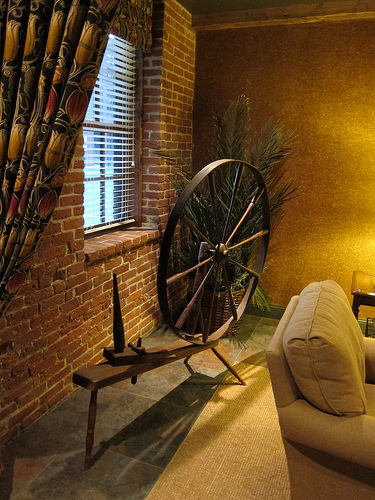
image by Flickr by mixed eyes
Atlantic City
Atlantic City, NJ. is a popular vacation destination, but did you know there is more to do than gamble? In the roaring 20s, the Steel Pier was a hotbed of entertainers from The Rat Pack to the Beatles. Although it was destroyed by fire in the 1970s, developers have revived the Pier to its former glory. If you are looking for a hotel that’s a bit more glamorous, perhaps The Revel is right for you, with its floor-to-ceiling windows overlooking the windswept beaches. It’s also within walking distance of this famous pier.
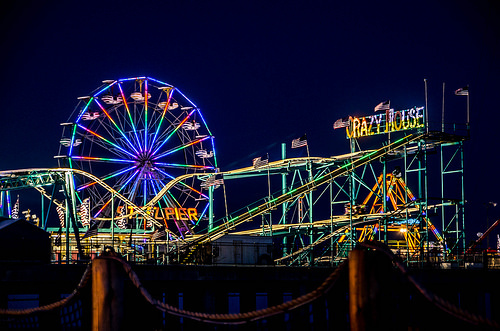
image by Flickr by kjarrett
Portsmouth
In 1774, Paul Revere rode to Portsmouth, NH, warning that “The British are coming.” Relive this amazingly history for yourself while staying at the Ale House Inn. Formerly an 1870s factory building, the Ale House is ideally situated 5 minutes from Prescott Park and the Market Square. It retains its authentic charm, all while offering up all the modern amenities needed for a comfortable stay.
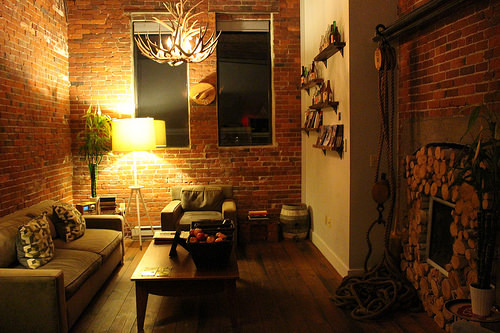
image by Flickr by Fifty State One Day
Bar Harbor
Finally, consider scenic Bar Harbor, ME., a well-known getaway for the rich and famous. Once the summer home of much of high society’s elite crowd, Bar Harbor was often frequented by the likes of the Rockefellers and Vanderbilts. Residing next to Acadia National Park, Bar Harbor offers up a touch of old money history with endless outdoor activities. In keeping the history alive, consider a stay at the historic Shore Path Cottage. Built in 1880, this lovely bed & breakfast once housed many of America’s wealthiest citizens. Family owned and operated, The Shore Path Cottage is ideally situated for both city sightseeing as well as more rural hiking.
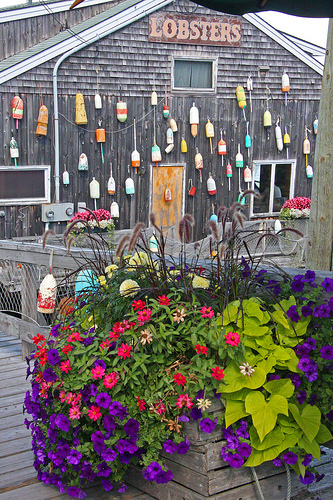
image by Flickr by exfordy
The historic Northeast United States is brimming with vacation possibilities. Whether your interests lie in the Revolutionary or Civil Wars, modern shopping and attractions, or outdoor activities, there is something for everyone.
The post Hipmunk Hotels Northeast: Exploring Lancaster, Roanoke, Bar Harbor and Beyond appeared first on § A Scientist Envisioning Science Fiction.
June 24, 2016
Hipmunk’s Guide to Landing the Lowest Summer Airfare

This post was originally published on Hipmunk’s Tailwind Blog on April 12, 2016
Gas prices are down, the temperature is heating up, and travelers are inevitably looking to take advantage of both this summer.
In fact, with all the sunny news about oil prices you may be itching to plan an escape of your own. But summer is three whole months long, airfare is usually priced at a premium, and there tends to be a lot of confusion for travelers around the optimal purchase date to obtain the best deal. Indeed, the most asked travel advice question posed to Hipmunk Navigators concerns the best time to purchase a ticket.
As of March 31, 2016, overall domestic summer airfare (flights departing and returning during June, July, or August), is down from a median price of $330 to $286.
Similarly, flights from the US to major European countries – Great Britain, France, Germany, Italy, Spain, Greece, Switzerland, Austria and Ireland – follow the same trend: travelers this summer are paying about 15 percent less than last year, from a median price of $1331 to $1129.
And those savings seem to translate into a higher proportion of people planning longer getaways: In 2015, 46 percent of summer vacations that involved flights lasted four days or fewer, while just 33 percent lasted between seven and 10 days.
In 2016, however, 40 percent are four days or fewer, while 38 percent are between seven and 10 days, indicating a shift towards longer vacations.

To ensure that the hardest decision you’ll have to make this summer season is which umbrella drink you’ll order, Hipmunk analyzed its historical booking data to find the best time to buy summer flights on a monthly and holiday basis. Further, you can find an an interactive guide to summer airfare that show the best times to book flights book flights from the top US cities to trending destinations for summer 2016, as well as Memorial Day, Labor Day and July 4th here.
Let’s dive in.
When to Buy: Summer Holiday
An analysis of Hipmunk’s historical data found that flights booked at least five to seven weeks in advance of major summer holidays—Memorial Day, July 4th and Labor Day—generally lock in better airfares.
Memorial Day: 5 weeks prior
The kick-off summer holiday weekend is also the second most popular travel time of the season and flight prices rise rapidly. The optimal time to buy according to historical data is five weeks prior to the holiday. (31 percent less than the week-of high.)

Fourth of July: 6 weeks prior
The most popular time to travel during the summer season is the week leading up to the July 4th holiday. To avoid steep price hikes, it’s best to book six weeks prior. (21 percent less than the week-of high.)

Labor Day: 7 weeks prior
The unofficial end of the summer also has the longest lead time. A safe bet is to purchase tickets towards the end of July when prices are their lowest—about seven weeks before the holiday weekend. However, if your plans are up in the air, you might be able to secure that same price up to three weeks in advance. (60 percent less than the week-of high.)

When to Buy: Vacation Month
If your dates are more flexible and you’re trying to decide when to buy tickets to score the lowest prices for a particular month, our data showed that there were two times when travelers could optimize their purchasing power: two months before the beginning of summer or five to seven weeks prior to their departure month, with a vacation in August needing the least amount of lead time and a vacation in July the most.
June: Now, or mid-May

July: Now, or the first week of June

August: Next week, or the last week of July

Now that you know the best times to buy for your summer vacation, it’s time to start planning. Try Hello Hipmunk, your free personal travel agent, to get flight and hotel recommendations straight to your inbox.
METHODOLOGY
Hipmunk analyzed its historical roundtrip airfare data from the top 30 US airports to determine the best times to purchase airfare.
To compare summer 2016 airfares and vacation lengths to those in summer 2015: Hipmunk calculated the median weekly round-trip flight prices for all flights booked during the first week of Jan 2015 through the last week of March 2015 for flights that departed and returned between Memorial Day and Labor Day, as well as the number of days of trip length for those flights, from the top 30 US airports (flight prices were included the week in which the flight departed). Hipmunk performed calculations with the same criteria for 2016 flights, and compared the results.
To find the best times to buy for lowest airfares: Hipmunk calculated the median weekly round-trip flight price from the top 30 US airports, for flights booked from the first week of April 2015 to the last week of August 2015 .
Hipmunk considered a flight for a holiday weekend one that departs up to three days prior to a holiday and returns up to two days after.
The post Hipmunk’s Guide to Landing the Lowest Summer Airfare appeared first on § A Scientist Envisioning Science Fiction.
June 1, 2016
5 On: Massimo Marino @ janefriedman.com

In this 5 On interview, author Massimo Marino discusses what it’s like to read science fiction as a scientist, his experience with the Booktrope publishing collective, the mission of BookGarage, and more.
Booktrope Publishing LCC publishes Massimo Marino‘s works. He’s a member of SFWA (Science Fiction and Fantasy Writers of America) and a scientist envisioning science fiction.
He contributed to the experiments at CERN and the Lawrence Berkeley National Lab, then accepted leading positions at Apple, Inc. and at the World Economic Forum. He is also co-founder of Squares on Blue, a big data analytics service company, and of BookGarage, a publishing services brokerage firm.
5 on Writing
CHRIS JANE: As a physicist, is it ever difficult for you to read science fiction by writers who don’t have a science background? I imagine it could sometimes be like a person in the military watching a movie about war and “Nope, wrong”-ing the uniforms and patches, or rolling their eyes at the ever-present helicopters flying over an Army post.
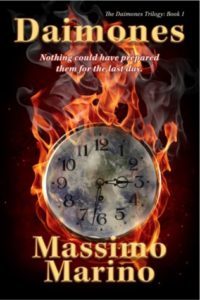 MASSIMO MARINO: True, unfortunately the suspension of disbelief goes bananas. I find it difficult to keep it in place (the suspension) even with the movie Interstellar. At times you wonder what the scriptwriters smoked or whether they ever bothered attending science classes.
MASSIMO MARINO: True, unfortunately the suspension of disbelief goes bananas. I find it difficult to keep it in place (the suspension) even with the movie Interstellar. At times you wonder what the scriptwriters smoked or whether they ever bothered attending science classes.
It is perfectly fine to extrapolate current knowledge to invent new technologies and new science, but not when they clash with proven laws, confirmed over and over again in all possible situations. Why should an author or a scriptwriter believe that they can be violated in their novels or in their movies?
Why do you write what you write?
I grew up with authors who are considered today to be pillars and geniuses in science fiction—leaders and path openers. Today, we are confronted a lot with novels that veer too often into fantasy, technobabble, and magic rather than science. The scientific element, also, is not an integral part of these stories, which could well be located in the now and without any need of a futuristic environment.
Science fiction has as many definitions as there are people who want to define it. Robert Heinlein said that SF was “Realistic speculation about possible future events, based solidly on adequate knowledge of the real world, past and present, and on a thorough understanding of the nature and significance of the scientific method.”
Besides, current fringe theories and experiments go beyond what any wild fantasy from people not accustomed to science could lead to. Science really flirts with wild amazement today.
What is the most important lesson you learned as a reader that helped or instructed your writing, and what writer or book taught you that lesson?
That economy in writing is gold. If I can summon a vision with twenty words, I’ll strive to summon that same vision in fifteen—in ten, even. There’s a power in being terse that is lost with too many words. Flowery prose, pedantic descriptions, passive voices that were part of the accepted narrative styles of even half a century ago are today seen as the mark of the debutante. “Cull all unnecessary words,” said Strunk and White. I say more about this in my blog.
You’ve written about the novice sci-fi writer’s tendency to offer too many details by way of explanation when writing about future technology, which “amounts to having a contemporary fiction writer who feels compelled to describe what happens when a character gets in a car and leaves.” What is another common writing mistake unique to sci-fi?
Assuming your readers will be speechless with invented new words and invented new technology that have no basis nor any roots in real science, or that are in direct contradiction with the laws that make our universe what it is.
Readers will be speechless while tossing away your book.
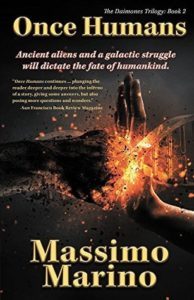 This is how you once described your dream job: “Being able to earn enough royalties from my books every month to pay for all I and family need.” What if achieving that goal meant having to devote all of your work time to writing, putting your work in physics completely aside?
This is how you once described your dream job: “Being able to earn enough royalties from my books every month to pay for all I and family need.” What if achieving that goal meant having to devote all of your work time to writing, putting your work in physics completely aside?
Well, as a matter of fact, I left active research in 2005, but the above remains my definition of a dream job. While writing my novels, I’ve researched scientists’ work in neuroscience, physics, and biology. I’ve had lengthy discussions with oncologists and psychologists. Pure fun.
5 on Publishing
You’re the COO of BookGarage, which you’ve described as “a community of like-minded people.… [T]he one-stop shop for everything related to professional self-publishing.” Services provided by freelancers registered with the site go well beyond editing and proofreading and include blurbs and synopsis writing, author website design and management, etc.
Freelance editor Jessica West in a June 2015 interview with BookGarage compares BookGarage to “an AI search engine focused on publishing industry professionals.” We learn in that interview that authors will “enjoy a supportive technology that creates connections, opens opportunities, and reduces the time spent in finding professional services from reputable freelancers, and reduces the risks that can come with that.”
What kinds of connections are created beyond connections with project-appropriate freelancers, if any? What kinds of opportunities are opened?
BookGarage is first a community. Authors, freelancers, and readers can engage in discussion threads; authors can ask editors for tips; personal connections—and we hope also friendship—can arise from being in BookGarage. We didn’t want just another place to find freelancers and pay for services; we wanted to start from the community, then branch into the marketplace.
BookGarage is still in its infancy, and we have in mind other connections fostered by the BookGarage community—those that could lead readers, for example, to “adopt” writers and support their writing.
BookGarage doesn’t accept all submissions. What is the vetting process?
We ask potential members to provide us with as much as possible about their writing journey, or their expertise in publishing. We go online and verify information, dig for more. For authors, we look at what they have published, their online presence, readers’ perception of their books. We use the “Look Inside” feature on Amazon to read pages and see whether the author cares for her readership.
It’s a similar process for freelancers, their portfolio: how they do present themselves on their website, if they have one; verify official credentials if they share them with us; references; and again go and see books they have collaborated with in any capacity.
If anything in that process doesn’t convince us, or contradicts the application, we deny entry into our community. And it does not stop there. Once in, we expect that the personal and professional qualities are confirmed. Some of our freelancers come from traditional publishing houses and have many years under their belts (and bestsellers, too).
There are several more authors and freelancers listed at BookGarage than there are readers. How important are readers to BookGarage’s mission, how do you attract them, and what should potentially interested readers know about what will be expected of them?
The situation has improved, recently. Nevertheless, we believe readers to be an important pillar for our vision. Internally, we say we’d love to attract discerning readers: those who are supportive of committed authors, who would like to be in a more proactive stance and contribute to the writing process, either with beta-reading or finally being in an environment where silly reviews and reviewers have no place, where they could sponsor writing projects, and leave behind flame wars, sock-puppeting, and all those dubious shameful self-promotion activities that litter other places.
Readers in BookGarage should find only serious writers who believe that quality is the most important thing to attract readers, and not whether they have the highest number of “likes,” whether their books are in the largest number of “listopias,” or whether they have the highest rating. Reviews in BookGarage, for example, don’t earn stars for the book, but a rainbow of appreciations in multiple areas, and “Unputdownable, highly recommended, 5-star” don’t have a place.
Let’s face it, Amazon has become the place where the “slush pile” is published, and readers, when willing to explore what the independent publishing arena produces, wade through mud and a wasteland before finding the rough diamond. In BookGarage, readers will have a much higher chance to find not only rough diamonds, but polished ones as well.
In addition to that, we also believe BookGarage to be a community of like-minded people. Some of them write and read, some help others write, still others read and like to engage with everybody else and discover writers who don’t believe in quick publishing and quick bucks.
You initially self-published, later receiving two offers from small houses. You said of those offers, “The current standard of contracts is laughable. I said thanks but no thanks in both cases.” You’ve since published with hybrid publisher Booktrope.
What did you like about their contract and/or system, and if you were approached now by a traditional press, would you be interested in publishing with them? If yes, why now? And if not, what would have to be in the contract in order for it to appeal to you?
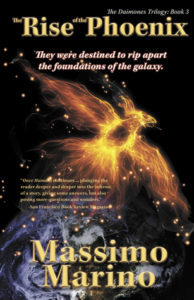 My two initial offers had me wonder: I was asked for my budget to market “their” books if I accepted to have my stories published with them (then the book was “theirs”). At the time, the advance they offered me (out of 10 percent of royalties) was much less than what I was making as an independent writer in a few months. Needless to say, I would have had to sell well over 20,000 copies to get anything more than that advance. Rip-off? You bet.
My two initial offers had me wonder: I was asked for my budget to market “their” books if I accepted to have my stories published with them (then the book was “theirs”). At the time, the advance they offered me (out of 10 percent of royalties) was much less than what I was making as an independent writer in a few months. Needless to say, I would have had to sell well over 20,000 copies to get anything more than that advance. Rip-off? You bet.
What I liked with Booktrope was the clear and transparent contract: everything based on royalties (no advance), but no losses for the author, either, and the possibility to work with the editorial team in the same way I was used to with the freelancer I had hired for my independently published books.
If I were to be approached by a more traditional press, I would be flattered, but I would also like to have a partner interested in my career and progression as an author, not just a mere percentage gain on sales which should be mirabolant only because the press has a big name. More than an advance, I’d love if publishing houses acted more as publicists and agents for their authors and not just as print shops trying to get as much as possible from the first edition or two only to drop the lemon to the floor when someone decided it had delivered the last drop.
Booktrope’s website says the only submissions they want at this point are those they solicit. (Note: As of the writing of this question, Booktrope had not announced their closing.) What was your introductory experience to Booktrope?
By now, the news must have reached the publishing world. Unfortunately, Booktrope is closing down. Having my stories accepted in a formal, traditional way gave me that recognition that many independent writers look for. Even Rachel Abbott feels the sting of being a self-published author; see how much the publishing world still needs to evolve?!
I met with a literary agent at a writers’ conference. We hit it off, and she asked to read my self-published books. She loved them and mentioned Booktrope as a new and innovative publisher who might be interested right away instead of having to wait for months and years, maybe. She introduced me to them and I submitted my first book. Then Booktrope asked to see the other two in the trilogy and decided to publish them all. My fourth novel, The Law, should have been published before the summer with Booktrope, but I guess it will find readers through another path, now.
Thank you, Massimo.
Chris Jane is a former newspaper feature writer, former freelance & fiction journal editor, former adjunct English professor, and former instructor of expressive writing, play writing, and screenwriting. Chris, still secretly proud of that one Pushcart Prize nomination in 2006, lives in Connecticut with a dream spouse and a couple of pets and is the author of The Year of Dan Palace and Pretty Much True.
The post 5 On: Massimo Marino @ janefriedman.com appeared first on § A Scientist Envisioning Science Fiction.
May 28, 2016
Getting Your Science Right
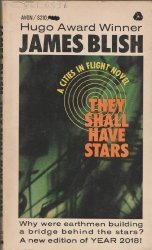 In James Blish’s novel “They Shall Have Stars
In James Blish’s novel “They Shall Have Stars ” we read:
” we read:
“there was no electronic device anywhere on the Bridge since it was impossible to maintain a vacuum on Jupiter.”
The assumption Blish made was that electronics implied vacuum tubes (no transistors invented yet), which would collapse under the extreme atmospheric pressure found on our giant planet companion.
Making assumptions – worse, making the wrong ones – will always let us down if we look to science fiction as a way to predict the future.
It helps if you really understand the science you use in your novels, its current limits, and its aspirations to venture beyond the edge. Don’t leave gray areas in the open, do your research and learn a lot about your science in science fiction, even if it is in order to write one line.
Definitions of science fiction grow on trees, and it is a great genre to write on, and to read. It certainly specializes in answering “What if?” questions. What other genre can place humans (or aliens) in an imagined scenario, dooms day, post-apocalyptic, dystopian societies, and with that element of science or technology to make the story unique and inspirational. It is the job of the writer to show how those human will then react.
For the writer, it is far more important to make sure for the follow-through of the initial “what if” to be realistic and logical than it is to make a clear prediction of scientific possibility, especially when your assumption – on the contrary – is that there will be no new scientific possibilities (like being stuck with vacuum tubes in the future). But don’t force prediction doing too much erring into fantasy. Current science – and currently explored theories – is a fertile ground for science fiction if you know where to look for.
More relevant than prediction is instead the influence of science fiction on real science. I’ve worked for many years at CERN and at the Lawrence Berkeley Lab, and I use that in my novels. Because science and science fiction are powerfully intertwined, it was also common to meet co-workers whose reading realm was Science Fiction. It’s obvious that science fiction is influenced by science, the clue’s in the name, but it is also true that science can be influenced by the right science fiction.
Take, for instance, robots. There is no doubt that many of the attempts to create humanoid robots have been driven by science fiction archetypes like Isaac Asimov’s classic stories. And the very word “robot” comes from fiction.
It is easy to find many different science and technology areas with a similarly complex relationship with science fiction. Virtual reality, tractor beams, bringing extinct creatures back to life, exoskeleton suits, cyborgs, cloaking devices and artificial intelligence spring to mind, and there are many more you can surely add to the list. But in the end, all of these pale before what might be the most important influence science fiction has on science. It may not have directly inspired every bit of science we see, but science fiction has certainly shaped generations of scientists. And that can only be a good thing.
Massimo Marino is a scientist envisioning science fiction. He spent years at CERN and The Lawrence Berkeley Lab followed by lead positions with Apple, Inc. and the World Economic Forum. He is also co-founder of “Squares on Blue”, a Big Data Analytics service company, and of BookGarage, a publishing service brokerage company.
Massimo currently lives in France and crosses the border with Switzerland multiple times daily, although he is no smuggler. #SFWApro
As a scientist writing science fiction, he went from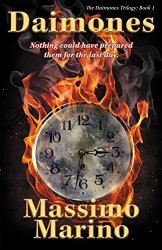 smashing particles at accelerators at SLAC and CERN to smashing words on a computer screen. He is is now an author with Booktrope Publishing, LCC, and Active Member of SFWA – Science Fiction & Fantasy Writers of America.
smashing particles at accelerators at SLAC and CERN to smashing words on a computer screen. He is is now an author with Booktrope Publishing, LCC, and Active Member of SFWA – Science Fiction & Fantasy Writers of America.
He’s the author of multi-awarded Daimones Trilogy. The 1st volume, Daimones (The Daimones Trilogy Book 1) , published by Booktrope is available since August 2015.
, published by Booktrope is available since August 2015. 
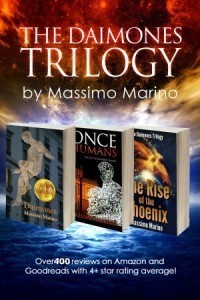 His novels have received the Seal of Excellency from both AwesomeIndies.net and IndiePENdents.org
His novels have received the Seal of Excellency from both AwesomeIndies.net and IndiePENdents.org
• 2012 PRG Reviewer’s Choice Award Winner in Science Fiction
• 2013 Hall of Fame – Best in Science Fiction, Quality Reads UK Book Club
• 2013 PRG Reviewer’s Choice Award Winner in Science Fiction Series
• 2014 Finalist – Science Fiction – Indie Excellence Awards L.A.
• 2014 Award Winner – Science Fiction Honorable Mention – Readers’ Favorite Annual Awards
His novels are available from Amazon, Barnes & Noble (Nook), iTunes Apple Store, and many other retailers around the world.
Join his mailing list for new releases, or follow him on Facebook, Google+, and Twitter.
The post Getting Your Science Right appeared first on § A Scientist Envisioning Science Fiction.
April 21, 2016
The Best Hotels for Exploring Literary London
This post was posted by the Hipmunk on Hipmunk’s Tailwind blog on Jan 11th.
From the shopping at Selfridges to the culture of The British Museum and the history underlining every step through the city, there are countless reasons to visit London. But the bookworm’s most compelling incentive is the rich thread of literary genius woven into the city’s very identity. Virginia Woolf, Charles Dickens, George Eliot, and Geoffrey Chaucer are just a few of the authors whose homes, favorite haunts, or most famous tales are spin on the city’s axis.
You can walk London Bridge and re-live the despair Pip felt when he learned Estella was to be married, or retrace Clarissa Dalloway’s steps to Hatchards Booksellers. To explore all the city’s tales would take lifetimes — that’s why we read books. But if you’re keen to take on a few of your favorite authors or stories in Bloomsbury, Wembley, and Whitechapel, here’s the definitive guide for what to see and where to stay.
1. The Strand Palace
Right in the thick of Central London, The Strand Palace is walking distance from Buckingham Palace and The National Gallery. A stone’s throw from the John Nash-designed Trafalgar Square, note The Fourth Plinth — originally intended to hold a statue of William IV, the plinth is now a platform for temporary, commission-based sculptures. The Square is now the site for many political demonstrations, and a young poet or playwright scribbling in the public square would not be out of place.
From the hotel, it’s just a short bus ride to The British Library. Originally part of the British Museum, the library plays host to over 150 million items. The only larger library in the world is the Library of Congress. The archival collection in the Sir John Ritblat Gallery is a treasure trove containing original copies of Beowulf, Jane Eyre, The Canterbury Tales, and Shakespeare’s first folio. It also houses the Magna Carta and a Gutenberg Bible.
2. St. Ermin’s Hotel, Autograph Collection
A literature lover can’t visit London without spending an hour (or five) at Westminster Abbey, a spot walking distance from St. Ermin’s. While the uninitiated may wonder what a church has to do with literature, to stop shy of doing the research would be a grave mistake (pun intended). See, Westminster Abbey isn’t just a thousand year-old church or the site of every monarch’s crowning since William the Conqueror’s in 1066. It is the burial place of hundreds of famous figures, and plays host to memorials for many more.
In the Abbey’s aptly named Poets’ Corner, Charles Dickens, Robert Browning, Rudyard Kipling, and Alfred, Lord Tennyson all have their final resting places. There are memorial busts and plaques to Jane Austen, Shakespeare, Christopher Marlowe, William Wordsworth, Oscar Wilde, and many more.
Fun fact: Geoffrey Chaucer is buried in the Abbey, but not because of his distinction as an author. Chaucer was, for a time, Clerk of the King’s Works at the Palace of Westminster. When he died in 1400, he was still in favor with the king, and so was buried in the Abbey, with a plain slab to mark his grave. It wasn’t until 1556 that Chaucer’s existing marble monument was erected, and his bones moved to the new location.
3. Grange St. Paul’s
Grange St. Paul’s is a comfortable distance from the Tower of London — a must-see for history and historical-fiction lovers. Famed as a prison for royals throughout history, the Tower has housed Anne Boleyn, Sir Walter Raleigh, and Guy Fawkes, to name a few. A glass pillow marks the spot where Anne Boleyn, Catherine Howard, and Lady Jane Grey were executed on Tower Green. If you time your visit right, you could attend a reading by the queen of Tudor historical fiction herself, Philippa Gregory.
A ten-minute stroll from Grange, Shakespeare’s Globe is a few hundred yards from the original Globe, and has been rebuilt based on the evidence (including sketches, literary references, and similar structures of the time) to provide the closest possible facsimile to the experience theatergoers in Shakespeare’s time would’ve had — down to the reed thatch roof that might leave you soggy on a rainy evening.
Before or after you take in a show at the Globe, stop off at the George Inn — a haunt of both Dickens and Shakespeare, and the only remaining “coaching” inn in London. With all its 16th-century charm, it’s easy to see how the spot earned itself a callout in Little Dorrit.
This sampling of literary London only skims the surface, but this itinerary will show you enough of the city’s charms to keep you hooked for life.
The post The Best Hotels for Exploring Literary London appeared first on § A Scientist Envisioning Science Fiction.
April 8, 2016
FilipinaExplorer’s: Where to Stay in Napa Valley for Wine Lovers

By Gretchen, appeared on FilipinaExplorer on the 29th of February
With over 400 wineries buffeting its rich Californian soil, there is no doubt that Napa Valley is among the best regions for wine connoisseurs. Only an hour-and-a-half from San Francisco, this grape-growing valley features undulating hills, premier vineyards, a robust art community, and gentle climate, all creating the perfect backdrop for a relaxing vacation. Fresh farm-to-table treats including olives, cheeses, and tomatoes await vino lovers too!
Add to that Napa’s array of well-appointed, strategically situated hotel resorts – some of which, collaborate with local farmers toward an ecotourism-centered experience – and you’ve got one tasty getaway.
Take these five best hotels in Napa, for instance.
3 Palms Napa Valley Hotel & Suites
Centrally located, 3 Palms Napa Valley Hotel and Suites places you within five minutes of downtown Napa’s important establishments such as the Oxbow Public Market, Napa General Store, and the Napa Valley Opera House.
Well-suited for no-frills business travelers and Napa Valley College visitors, each of the hotel’s 47 budget-friendly and hypoallergenic rooms feature a hot tub, cable TV, a work desk, and free wired internet and WiFi in all areas.
For leisure, guests can enjoy a bevy of outdoor facilities including billiards, canoeing, tennis, and golfing within three kilometers. Families will appreciate barbecuing by the pool.
Napa Discovery Inn
Also located only a mile away from downtown, Napa Discovery Inn offers wine lovers unrivalled access to the Napa Valley Wine Train as well as prime wineries – Perelli-Minetti Winery, Tulocay Winery, Round Hill Cedars, and Napa Valley Port Cellars included.
Although cheaper than most hotels in Napa Valley, this full-service hotel provides comforts beyond same-class hotels. Apart from premium TV channels, fridge, and microwave, the custom-decorated rooms also come with complimentary WiFi, parking, local calls, and Continental breakfast.
Napa River Inn
Hailed as a Forbes Travel Guide 4-Star Award 2015 winner, Napa River Inn delivers luxurious rooms and suites with fireplaces and upmarket facilities on site, including tennis courts, a fitness center, and a gorgeous spa. It rests on the Historic River Mill, where first-rate boutique shops and restaurants lie. For art and theater performances, check out Mill’s Riverbend Performance Plaza.
A pet-friendly hotel, Napa River Inn boasts a VIP Pet Program, where pets can luxuriate in deluxe accommodations and spa services.
River Terrace Inn – A Noble House Hotel
Less than half-a-mile away from downtown Napa’s wine-tasting hubs and the Napa Valley Wine Train, River Terrace Inn – A Noble House Hotel is among the top options for upscale accommodations in the valley.
Upgraded rooms with whirlpool baths overlook the Napa River, a view complemented by a beautiful outdoor pool and several on-site walking trails. Smoke-free standard rooms are also available, all equipped with premium TV channels, DVDs, a minibar, hypoallergenic sheets, and pillowtop mattresses. Guests also get free access to the health club.
Stay connected through free in-room WiFi and newspaper, rejuvenate with in-room spa treatments, or hike to the nearby Petrified Forest or Oxbow Park Preserve. Complementary bike hires as well as wine tasting may also be availed.
Silverado Resort and Spa
For visitors who prefer a luxe multi-estate community feel, sprawling Silverado Resort and Spa offers four unique properties: the contemporary Mansion Estates and Cottage Drive, and the ultra-private The Grove and Oak Creek East. Rooms are furnished with luxurious sheets, gorgeous fireplaces, full kitchenette, and balconies. Some even have their own tennis courts and private pools.
Apart from free WiFi and parking, guests also enjoy exclusive access to a fitness center, two championship golf courses, three restaurants, and 10 outdoor pools – not to mention mere one-mile distance to wineries, including the William Hill Estate Winery.
The post FilipinaExplorer’s: Where to Stay in Napa Valley for Wine Lovers appeared first on § A Scientist Envisioning Science Fiction.
Where to Stay in Napa Valley for Wine Lovers

By Gretchen, appeared on FilipinaExplorer on the 29th of February
With over 400 wineries buffeting its rich Californian soil, there is no doubt that Napa Valley is among the best regions for wine connoisseurs. Only an hour-and-a-half from San Francisco, this grape-growing valley features undulating hills, premier vineyards, a robust art community, and gentle climate, all creating the perfect backdrop for a relaxing vacation. Fresh farm-to-table treats including olives, cheeses, and tomatoes await vino lovers too!
Add to that Napa’s array of well-appointed, strategically situated hotel resorts – some of which, collaborate with local farmers toward an ecotourism-centered experience – and you’ve got one tasty getaway.
Take these five best hotels in Napa, for instance.
3 Palms Napa Valley Hotel & Suites
Centrally located, 3 Palms Napa Valley Hotel and Suites places you within five minutes of downtown Napa’s important establishments such as the Oxbow Public Market, Napa General Store, and the Napa Valley Opera House.
Well-suited for no-frills business travelers and Napa Valley College visitors, each of the hotel’s 47 budget-friendly and hypoallergenic rooms feature a hot tub, cable TV, a work desk, and free wired internet and WiFi in all areas.
For leisure, guests can enjoy a bevy of outdoor facilities including billiards, canoeing, tennis, and golfing within three kilometers. Families will appreciate barbecuing by the pool.
Napa Discovery Inn
Also located only a mile away from downtown, Napa Discovery Inn offers wine lovers unrivalled access to the Napa Valley Wine Train as well as prime wineries – Perelli-Minetti Winery, Tulocay Winery, Round Hill Cedars, and Napa Valley Port Cellars included.
Although cheaper than most hotels in Napa Valley, this full-service hotel provides comforts beyond same-class hotels. Apart from premium TV channels, fridge, and microwave, the custom-decorated rooms also come with complimentary WiFi, parking, local calls, and Continental breakfast.
Napa River Inn
Hailed as a Forbes Travel Guide 4-Star Award 2015 winner, Napa River Inn delivers luxurious rooms and suites with fireplaces and upmarket facilities on site, including tennis courts, a fitness center, and a gorgeous spa. It rests on the Historic River Mill, where first-rate boutique shops and restaurants lie. For art and theater performances, check out Mill’s Riverbend Performance Plaza.
A pet-friendly hotel, Napa River Inn boasts a VIP Pet Program, where pets can luxuriate in deluxe accommodations and spa services.
River Terrace Inn – A Noble House Hotel
Less than half-a-mile away from downtown Napa’s wine-tasting hubs and the Napa Valley Wine Train, River Terrace Inn – A Noble House Hotel is among the top options for upscale accommodations in the valley.
Upgraded rooms with whirlpool baths overlook the Napa River, a view complemented by a beautiful outdoor pool and several on-site walking trails. Smoke-free standard rooms are also available, all equipped with premium TV channels, DVDs, a minibar, hypoallergenic sheets, and pillowtop mattresses. Guests also get free access to the health club.
Stay connected through free in-room WiFi and newspaper, rejuvenate with in-room spa treatments, or hike to the nearby Petrified Forest or Oxbow Park Preserve. Complementary bike hires as well as wine tasting may also be availed.
Silverado Resort and Spa
For visitors who prefer a luxe multi-estate community feel, sprawling Silverado Resort and Spa offers four unique properties: the contemporary Mansion Estates and Cottage Drive, and the ultra-private The Grove and Oak Creek East. Rooms are furnished with luxurious sheets, gorgeous fireplaces, full kitchenette, and balconies. Some even have their own tennis courts and private pools.
Apart from free WiFi and parking, guests also enjoy exclusive access to a fitness center, two championship golf courses, three restaurants, and 10 outdoor pools – not to mention mere one-mile distance to wineries, including the William Hill Estate Winery.
The post Where to Stay in Napa Valley for Wine Lovers appeared first on § A Scientist Envisioning Science Fiction.








